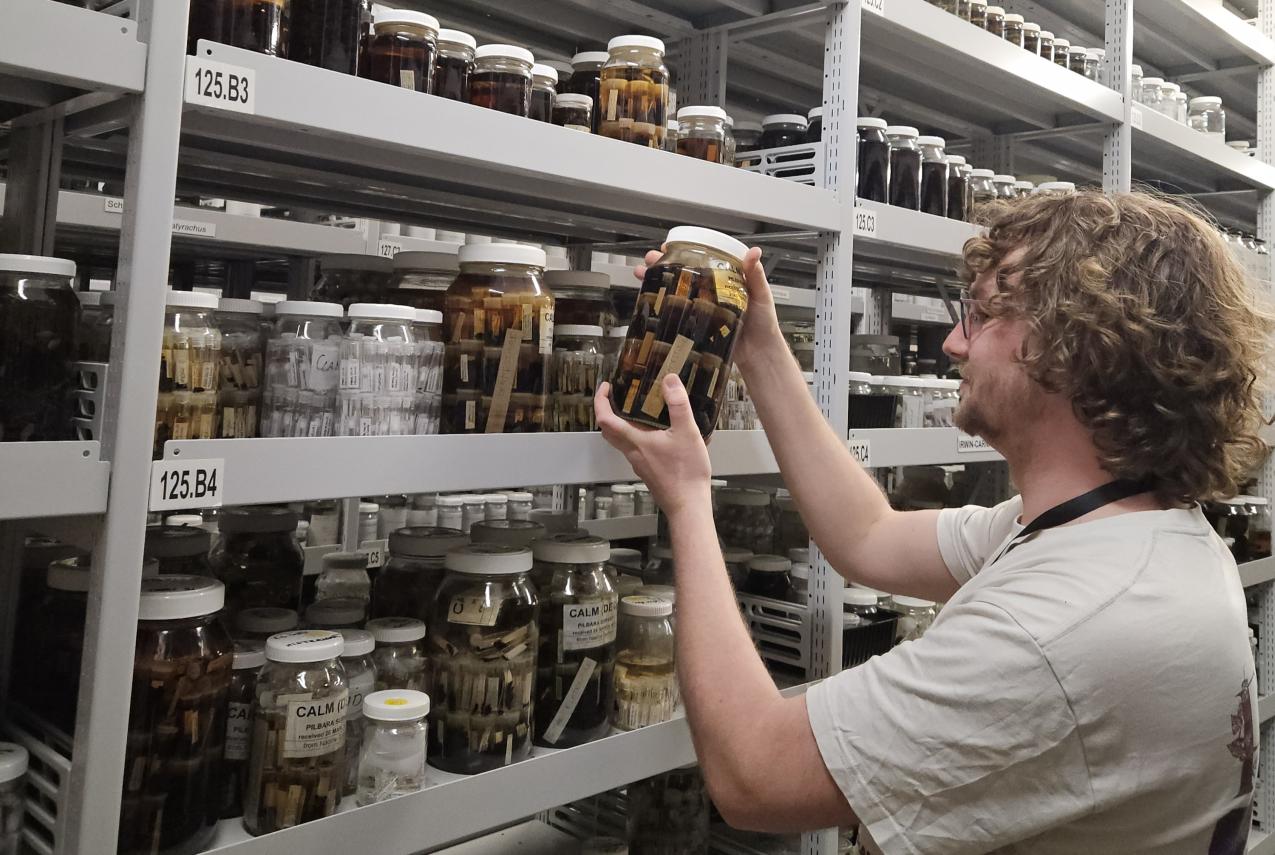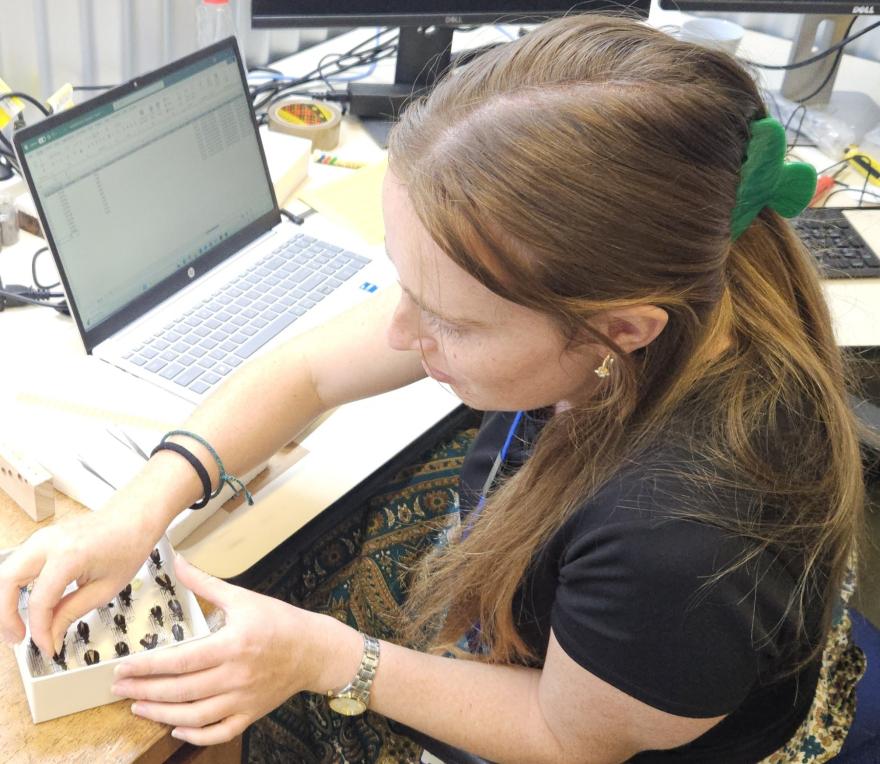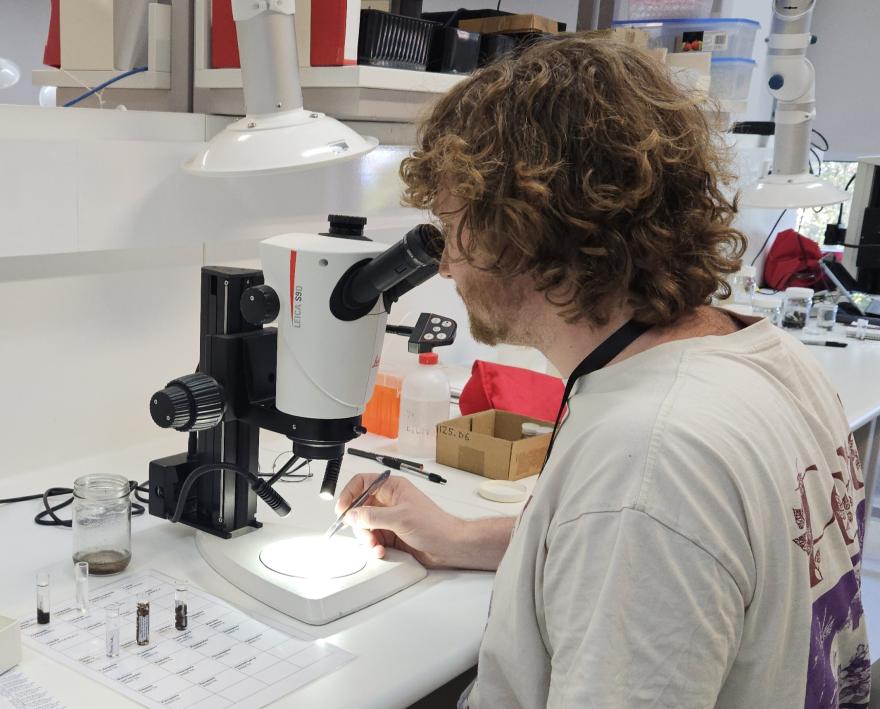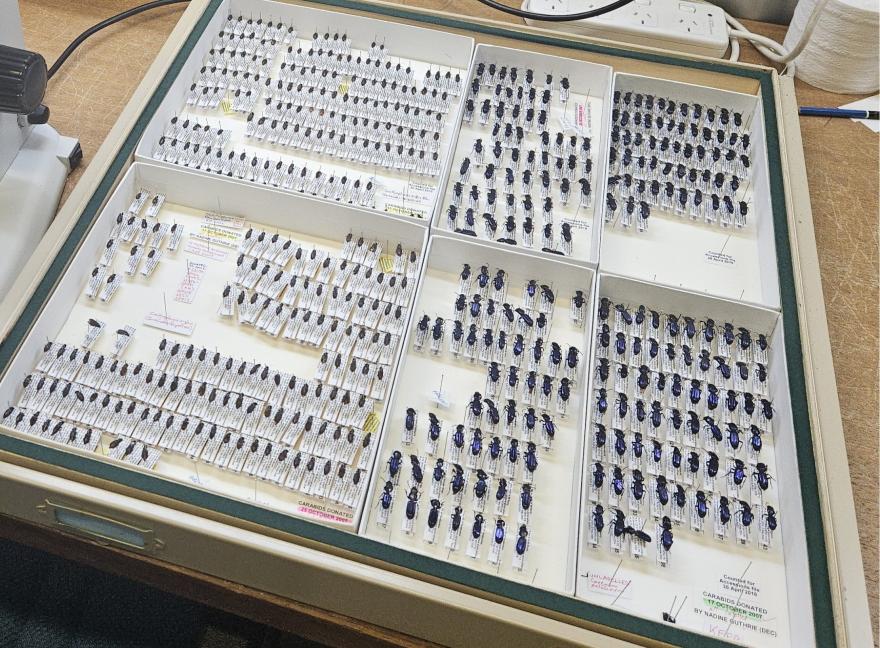The three-year Fortescue Marsh Biodiversity Project has reached an exciting new stage with the appointment of UWA Honours graduate Tom Ferguson. He is now spearheading the lab-based processing of decades-old field samples, reporting directly to Dr Nik Tatarnic, Curator of Entomology at the Western Australian Museum.
Tom is leading a team of enthusiastic interns and volunteers, working to transform the 2002–2007 CALM survey collections into accessible scientific data for global access.
This stage of the Project is a vital part of the partnership between the WA Museum, Fortescue, and the Foundation for the WA Museum, which aims to deepen our understanding of biodiversity in the Fortescue Marsh and surrounding Pilbara area, specifically in relation to ground beetles (Carabidae).
A key goal of this phase is to make specimens collected during the CALM survey accessible to researchers in Australia and abroad. This includes not just carabid beetles – the primary focus group of the project – but all insects collected over the course of the CALM survey.
In the lab, the team is labelling and registering pinned specimens in the Museum database, as well as sorting bulk wet pitfall trap material under microscopes, and eventually pinning, labelling and registering this material as well. It’s painstaking, detailed work, but essential for documenting the Pilbara’s invertebrate biodiversity and supporting future research.
The results are already coming in. The team has registered more than 2000 specimens into the Museum database, mostly comprised of beetles that had already been identified to species level.
They’ve also developed workflows to process the remaining 1,109 jars of assorted invertebrates and debris—a slow but crucial step toward creating a complete record of the Pilbara’s invertebrate fauna.
Working alongside Tom are two interns from the McCusker Centre at The University of WA and a group of volunteers passionate about entomology. Under his guidance, they’re gaining hands-on experience in taxonomy, lab techniques, and biodiversity documentation, playing an important role in the ongoing success of this landmark project.
Each specimen processed and species documented moves the Pilbara biodiversity project closer to its goals: creating a comprehensive record of the region’s invertebrates, providing a baseline for research, and supporting long-term conservation planning.



